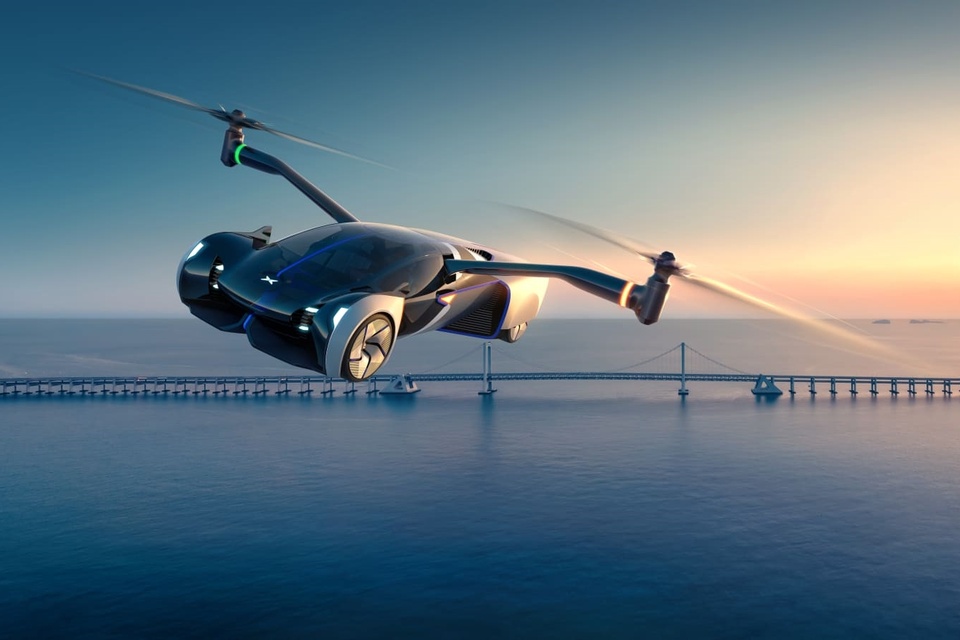
|
|
Flying cars continue to be a controversial topic. Photo: Xpeng. |
According to HotCars, flying cars seem to have become the ultimate goal that the global automotive industry is aiming for. Flying cars, which are vehicles capable of traveling in the air, often make appearances in science fiction movies, reflecting humanity’s perspective on transportation in the future.
Fundamentally, the purpose of flying cars is to address the congestion issue on public roads. With flying cars, people can easily bypass traffic jams by flying over them. However, it seems that this convenience is somewhat already being met by modern transportation infrastructure.
Is Flying Cars Really Necessary?
An argument commonly used to refute the necessity of flying cars is that modern infrastructure is already capable of meeting the goals that this means of transportation aims for.
In a podcast, Neil deGrasse Tyson – a renowned author of many astrophysics books – argued that flying cars are not needed because bridges, tunnels, and highways are already able to provide alternative routes above or below existing road networks.
To elaborate, Neil deGrasse Tyson argued that traditional roads on the ground are made up of width and length. Once both width and length are congested due to rapid traffic increase, the solution is to expand vertically and create bridges, overpasses, or tunnels.
Similarly, with flying cars, these solutions make it easier for people to navigate congested areas by going above or below them.
| |
|
Multilevel interchanges are considered to serve a similar purpose as flying cars. Photo: Hồng Quang. |
Subways and railways also serve a similar purpose to flying cars, according to Neil deGrasse Tyson. They can both operate above or below the existing transportation system and help people reach their destinations faster than driving on the road.
Once flying cars become commonplace, the “sky traffic jam” scenario would be more likely. Similar to subways, bridges, tunnels, and train systems, as more people switch to using new modes of transportation, congestion will occur.
In this case, flying cars would only shift the congestion from traditional roadways to the sky. According to Neil deGrasse Tyson, he cannot imagine a feasible transportation method that would replace flying cars once the airspace becomes crowded.
Safety Concerns
Safety is considered the greatest challenge for flying cars, according to HotCars. With traditional cars, drivers can simply pull over when encountering an issue and wait for roadside assistance. However, when a flying car’s engine encounters a problem, it can become a disaster not only for the passengers inside but also for people on the ground.
The safety systems for traditional cars have a long history of development, unlike what is still relatively primitive on flying vehicles.
On the other hand, if flying cars become personal vehicles, training and licensing will need to be more tightly regulated. The process of learning to fly a car would undoubtedly be more difficult, and learners will have to bear higher costs compared to regular driving education and testing.
| |
|
Training for flying cars may not be much different from training pilots. Photo: John Ingle. |
Even experienced drivers would need to start from scratch because flying a car is completely different from driving a regular car. Flight schools would have to train skills that currently can only be found in pilot training. Students would expect to be trained by highly qualified instructors, thus significantly increasing the cost of training.
Privacy is also a concerning aspect when flying cars become popular. According to HotCars, no one would enjoy having someone else fly a car over their roof or backyard on a weekend.
The Future of Air Traffic
However, HotCars believes that flying vehicles used for public transportation will be more feasible than personal flying cars. Many automakers and startups are working together to create flying buses or flying taxis.
Specifically, Uber is collaborating with Joby Aviation to develop vertical takeoff and landing (VTOL) vehicles. Uber envisions bringing its services to the sky through fully electric VTOL vehicles. The company also plans to build a network of infrastructure that allows its VTOLs to take off and land at urban locations. In 2020, Toyota also invested nearly $400 million in Joby Aviation.
HotCars also mentioned that in 2020, Toyota partnered with SkyDrive to develop flying taxi services or delivery drones. The Japanese automaker worked with the city of Osaka to deploy fully electric VTOL transportation and is scheduled to officially launch by 2025.
| |
|
Toyota and SkyDrive jointly developed flying cars. Photo: Bloomberg. |
Aircraft manufacturer Airbus is also joining the race to develop VTOL with its CityAirbus prototype. This all-electric VTOL vehicle has a maximum operating range of over 80 km and a cruising speed of about 120 km/h.
When put into operation, Airbus’ flying vehicles can shorten the travel time for passengers to airports from hours to just a few minutes.
Great Books to Read On the Go
The Automotive section brings readers fascinating books on various topics. On long journeys with cars, it’s not uncommon to have moments of rest, relaxation, and books becoming your enjoyable travel companions.
Uncover the unrivaled safety of the Mitsubishi Pajero
For nearly two decades, the Mitsubishi Pajero has been regarded as the top-performing 7-seater SUV in Vietnam. It has been the preferred choice for government agencies, businesses, and diplomatic missions. That is why the introduction of the new model, with its significant upgrades in exterior and interior design, performance, and particularly its high level of safety, elevates the Pajero to the status of the king in the off-road vehicle industry.













































